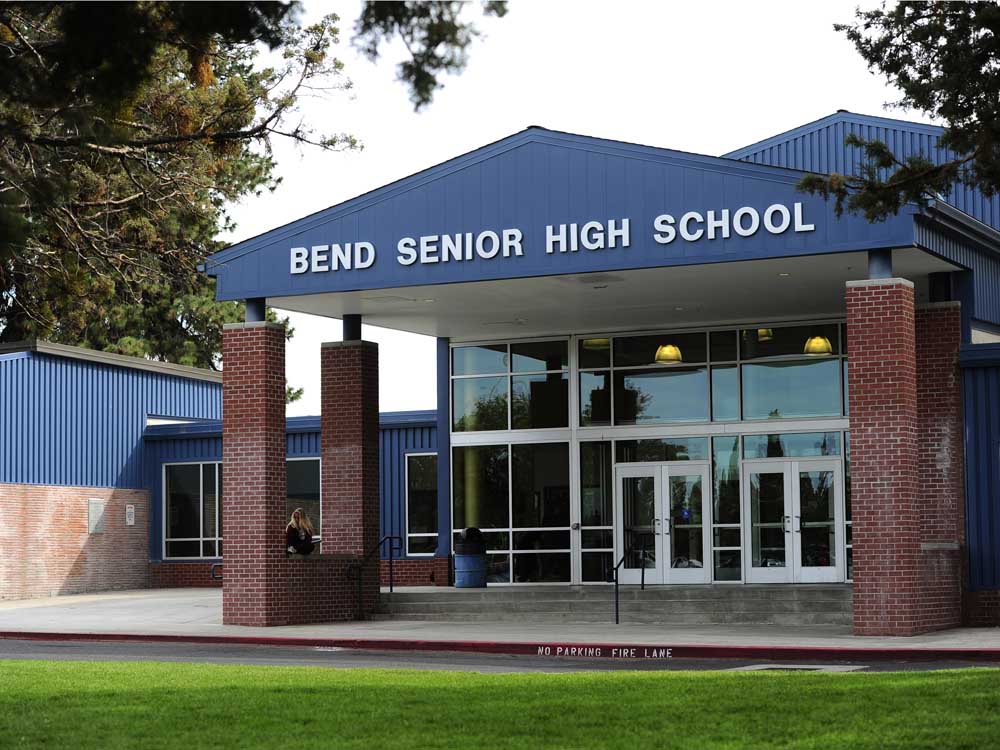Oregon education officials consider changing required class time, graduation requirements
Published 11:00 am Friday, March 20, 2020

- Bend High School on NE Sixth Street would get a major upgrade if voters approve a bond measure on the Nov. 8 ballot.
With schools closed now through April 28, and colleges and universities told to move online to teach, educators and students across Oregon are facing a mass disruption in learning the state has never seen.
Gov. Kate Brown has imposed some of the nation’s strictest social distancing measures in an effort to slow the spread of the novel coronavirus. But it’s still largely unknown how Oregon’s education system will respond.
The State Board of Education is soon expected to consider adjusting the requirements for class time that local school systems must meet to keep their state funding. Currently, school districts must offer at least 900 hours of instruction for K-8 students, 990 hours for grades 9-11, and 966 hours for high school seniors.
State and federal waivers would allow the state’s 197 school districts more latitude in moving toward offering online learning and virtual teaching as more than 580,000 Oregon students are kept out of their physical classrooms for at least the next 5½ weeks.
Colt Gill, deputy state superintendent and director of the state Department of Education, said during Thursday’s Board of Education meeting that the state’s priority is amending graduation requirements for current high school seniors.
According to Jim Green, executive director of the Oregon School Boards Association, the waiver on instructional hours is the biggest question for school leaders, along with ensuring that any approach to online learning provides all Oregon students the same options. The problem with online learning is that not every Oregon home has internet access and homeless students in particular would be disadvantaged if online learning proceeds. There are also barriers around providing options to non-English speaking students.
“This is a civil rights issue,” Green said. “There are a variety of things that districts need to think about how they’re going to address those issues.”
Green said that Oregon’s school districts are generating somewhere in the neighborhood of 200-300 questions for his organization per day. The association is triaging requests and questions on a number of topics as state education leaders continue releasing new information and directives to school officials.
One of the few heartening messages, Green said, is that funding for schools won’t be pared.
“I think one of the things that the governor in talking with all of us made very clear and her executive order is state school fund dollars will flow to school districts as if schools were operating,” Green said. “As a matter of fact, we’re telling our school district members, pay your staff as if they’re working.”
According to Marc Siegel, Education Department spokesperson, charter schools also face the same terms of closures. All Oregon charter schools — 132 schools serving more than 30,000 students — are subject to the governor’s executive orders, and most charter schools operating from a physical location where students attend, such as a school building or school campus, are shut down, but virtual schooling continues in some cases. The number of charter schools continuing with virtual learning wasn’t immediately available.
“A number of charter schools are currently operating as full virtual schools. Some were previously operating as virtual schools and adjusted their program to be 100 percent virtual,” Siegel said. “And some brick-and-mortar charter schools have flipped their program to meet the standards for virtual education.”
For Green, one of the biggest lingering questions is how schools fit into community response due to schools often being used as gathering spots and points of access for social services in much of rural Oregon.
“Outside of the metro area, schools are generally community hubs, so what are they going to do to in order to help out in their communities,” Green said. “We’re already seeing a variety of things in regard to meal drops, grab-n-go lunches, because we know we have vulnerable populations within our school districts who need those meals and, in some instances, it may be the only meal those kids get.”






